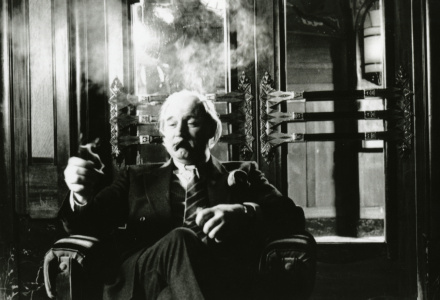Matthijs van Heijningen
Matthijs van Heijningen is without a doubt one of the most influential feature film producers in the Netherlands. With major hits such as Van de koelen meren des doods, Een vlucht regenwulpen, De lift, Ciske de rat, Op hoop van zegen and films such as De stilte rond Christine M. and 1000 Rosen – both of which won a Golden Calf for best Dutch feature film – he’s one of the most successful filmmakers in the history of Dutch film.
Van Heijningen is multifaceted man. On the one hand he’s perceived as a tough producer who wants to cut costs and save money on everything and everyone, on the other he’s built up a reputation as someone who provides opportunities for young talent. Van Heijningen will make a popular film and then turn around and produce a smaller-scale, artistic film.
Prototypical Producer
The image of Van Heijningen is that he all too gladly plays the role of the prototypical producer: a big cigar, an expensive car, an impressive house and everything that goes along with all this – and that image isn’t just created by the media. As Van Heijningen himself has stated, he started it all as a sort of joke. It’s a kind of mask that he puts on, not inspired by film producer Irving Thalberg, as is often postulated in the media, but instead modelled on Alfred Hitchcock, according to Van Heijningen himself.
Mr. Opportunity
Van Heijningen sees himself as a provider of opportunities, and as a producer to whom many directors remain loyal. He was the one who gave important Dutch directors such as Nouchka van Brakel, Ate de Jong, Marleen Gorris and Dick Maas a chance to debut their films in the cinema. After having made one film with him, many of them went on to continue collaborating togther: Van Heiningen produced six films by Nouchka van Brakel, four each by Guido Pieters and Ate de Jong, and three films each by Roeland Kerbosch and Frouke Fokkema.
Third Generation
Van Heijningen grew up in a strict Reformed family, and it was perhaps it was his desire to leave this milieu behind that led him to Amsterdam’s alternative, provocative theatre world. He ended up in the film business almost accidentally when his theatre Sigma Centre went out of business and Anton Kothuis asked him to produce a short film. He decided to become a film producer after that, but he wanted to do it differently from those who’d gone before him. He saw himself as belonging to a third generation post-WWII filmmakers (after the first generation that included Bert Haanstra and Fons Rademakers). Van Heijningen intentionally wanted to distance himself from the films by, for example, Pim de la Parra and Wim Verstappen. He thought their films were nonsense and had nothing to do with reality. Van Heijningen wanted to make films that ‘were about something’ and, during his career, he oriented his work primarily towards a select, smaller audience (about 200,000 viewers) – he called it ‘the Buñuel audience’.
more information
If you are looking for more material from our collection, please contact Film Sales:
sales@eyefilm.nl
phone +31 (0)20 5891 426
